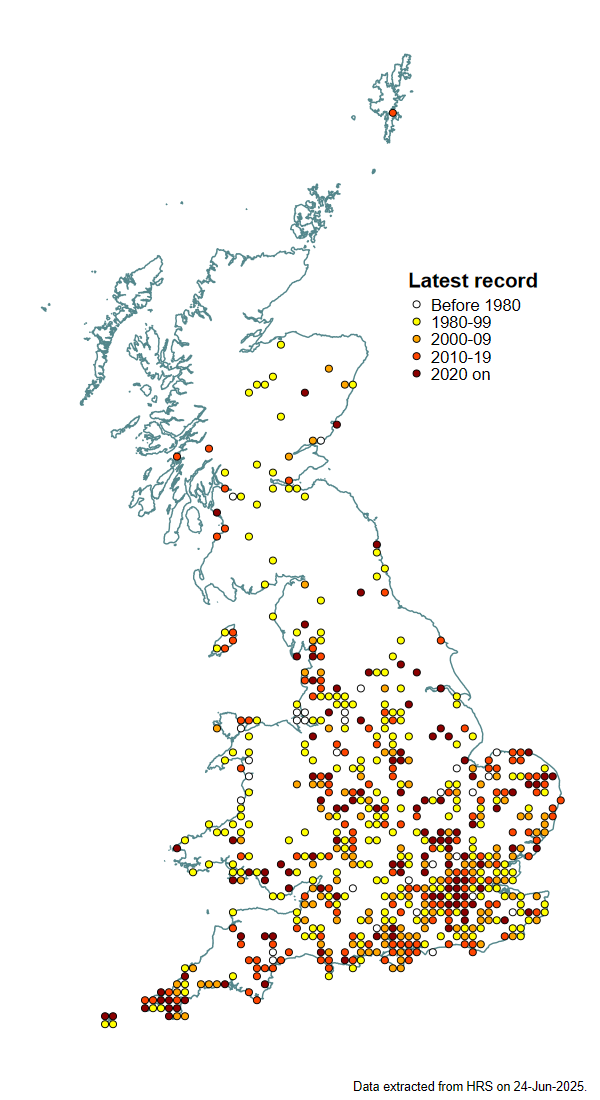Eumerus funeralis Meigen, 1822
Identification
Identification difficulty = 3. ![]()
![]() according to Ball & Morris, 20241
according to Ball & Morris, 20241
Synonymy
Eumerus tuberculatus Rondani, 1857 in Ball & Morris (2000)2, Rotheray (1993)3, Stubbs & Falk (1983)4.
Biology
The larva mines damaged bulbs of daffodils Narcissus and many other cultivated and wild species. Adults are usually found low in vegetation or resting on dead stems or bare patches of soil. They might be overlooked as a small mining bee such as the genus Lasioglossum.
Flight period
The following plots show the number of unique records per week excluding those reported to be of immature stages.

Status
E. funeralis was added to the British list by Collin (1918)5 and the recording scheme holds only one pre-1920 record, a museum specimen taken in Surrey in 1905. It was probably accidentally introduced in bulbs imported from southern or central Europe.
Distribution
This is predominantly a southern species and is especially abundant in the 'home counties', but also occurs in scattered localities north to the Spey valley. It is especially frequent in gardens where it is known to gardeners as the 'lesser bulb fly' and regarded as a pest. Speight (1985)6 concludes that this species is not established in Ireland. The frequency with which this species has been recorded has declined significantly over the past few decades.

Trends
The following plots show the Frescalo TFactor vs year and a map of the rescaled frequency (all records) for the species.
-
Ball, S., & Morris, R. (2024). Hoverflies of Britain and Ireland. WILDGuides (3rd ed.). Oxford: Princeton University Press. ↩
-
Ball, S., & Morris, R. (2000). Provisional atlas of British hoverflies (Diptera, Syrphidae). Huntigdon: Biological Records Centre. ↩
-
Rotheray, G. (1993). Colour guide to hoverfly larvae (Diptera, Syrphidae) in Britain and Europe. Dipterists Digest (first series), 9, 1–155. ↩
-
Stubbs, A., & Falk, S. (1983). British Hoverflies: An Illustrated Identification Guide (1st ed.). Reading: BENHS. ↩
-
Collin, J. (1918). A Dipteron new to the British List. Trans. ent. Soc. Lond. (Proc.), 1918, lxxvii. ↩
-
Speight, M. (1985). Adjustments to the Irish Hoverfly List (Diptera: Syrphidae). Irish Naturalists’ Journal, 21(9), 385–391. ↩